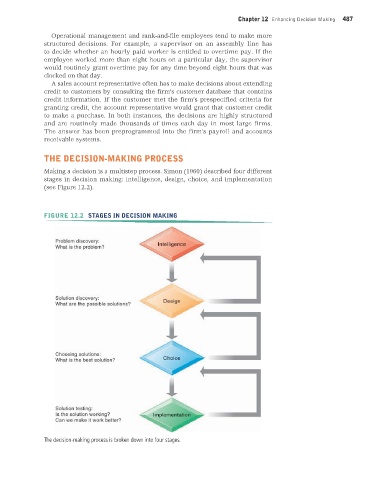Page 488 -
P. 488
Chapter 12 Enhancing Decision Making 487
Operational management and rank-and-file employees tend to make more
structured decisions. For example, a supervisor on an assembly line has
to decide whether an hourly paid worker is entitled to overtime pay. If the
employee worked more than eight hours on a particular day, the supervisor
would routinely grant overtime pay for any time beyond eight hours that was
clocked on that day.
A sales account representative often has to make decisions about extending
credit to customers by consulting the firm’s customer database that contains
credit information. If the customer met the firm’s prespecified criteria for
granting credit, the account representative would grant that customer credit
to make a purchase. In both instances, the decisions are highly structured
and are routinely made thousands of times each day in most large firms.
The answer has been preprogrammed into the firm’s payroll and accounts
receivable systems.
THE DECISION-MAKING PROCESS
Making a decision is a multistep process. Simon (1960) described four different
stages in decision making: intelligence, design, choice, and implementation
(see Figure 12.2).
FIGURE 12.2 STAGES IN DECISION MAKING
The decision-making process is broken down into four stages.
MIS_13_Ch_12 global.indd 487 1/17/2013 2:30:30 PM

